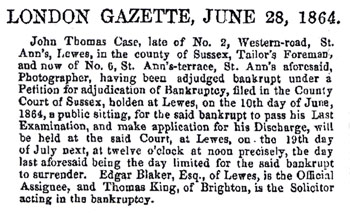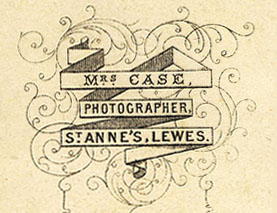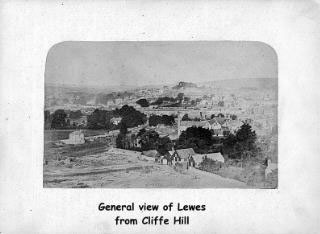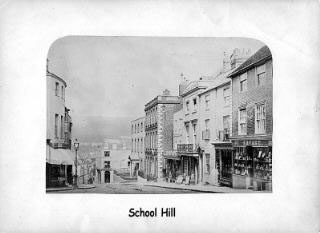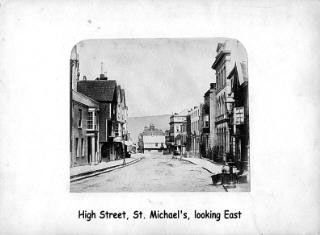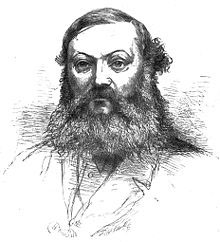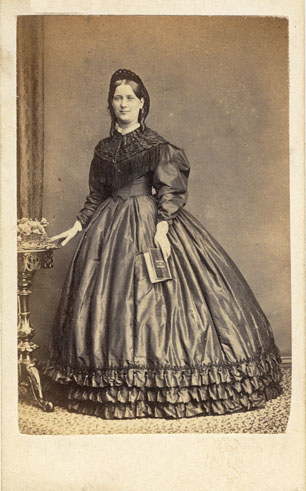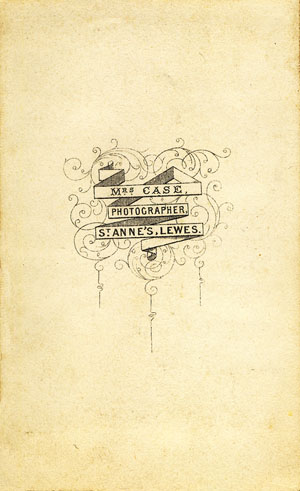| John Thomas Case (born c1819,
Scotland) John Thomas Case was born in Scotland around 1819. John Thomas Case came to Lewes during the 1850s to work for a local tailoring firm. According to Mark Antony Lower, the proprietor of a boarding school at St Anne's House in Lewes, John Thomas Case was "a self-taught amateur of the art of Photography". Employed as a tailor's foreman, John Case could only practise his photography in his spare time, during the "few leisure hours" available to an ordinary working man. Mark Antony Lower was a leading figure in the Sussex Archaeological Society and it was at his request that John Case took a number of photographic views of the "ancient town" of Lewes. With the assistance and encouragement of Mark Antony Lower, the 14 photographs of Lewes produced by John Case were published in 1857 as a portfolio entitled "Photographic Views of Lewes, Accompanied by Brief Descriptions". In 1858, John Case, then a tailor's foreman in his late thirties, married Margaret McGlashan (born c1832, Scotland), the daughter of John McGlashan, in Hackney, London. [The marriage of John Thomas Case and Margaret McGlashan was registered in the London district of Hackney during 3rd Quarter of 1858]. After their marriage, John and Margaret Case set up home in Western Road in the St Anne's district of Lewes. When the 1861 census was taken, John Thomas Case was recorded as forty-two year old "Tailor's Foreman" residing with his wife at 2 Western Road, Lewes. Sometime between 1861 and 1864, it appears that John and Margaret Case moved to 6 St Anne's Terrace, Lewes, where John Case set himself up as a professional photographer. John Case's venture as a professional photographer was not successful. A notice in The London Gazette, published on 28th June,1864, informed the public that John Thomas Case, Photographer of No. 6, St Anne's Terrace, St Anne's, Lewes, had been "adjudged bankrupt" under a Petition filed in the County Court of Sussex on 10th day of June 1864. Although John Case had been personally declared bankrupt, it did not prevent his wife, Mrs Margaret Case, from establishing a photographic portrait studio at their home at 6 St Anne's Terrace, Lewes. During the period 1864-1865, Mrs Margaret Case took carte-de-visite portraits in the studio in St Anne's Terrace. Surviving examples of her photographic work carry a trade plate printed with the words "Mrs Case, Photographer, St Anne's, Lewes". The 1865 edition of R. Simpson's Directory of Lewes lists Mrs J. T. Case as a photographer at 6 St Anne's Terrace, Lewes.
[ABOVE] Detail of an old map of Lewes showing the area of St Ann's, (St Anne's), from where both John Thomas Case and Mrs Margaret Case worked as photographers. |
[ABOVE] The High Street, St Anne's, looking East, one of the 14 photographs which featured in John Thomas Case's portfolio entitled "Photographic Views of Lewes", which was published in November 1857. Issued by John Thomas Case from his home in Western Road, Lewes, the portfolio comprised 14 albumen prints, 12 x 18 cm, accompanied by 8 pages of text containing brief descriptions of the views of Lewes captured by Case's camera. The introduction and 'brief descriptions' were written by Mark Antony Lower of the Sussex Archaeological Society. John Thomas Case's view of the St Anne's section of Lewes High Street shows, on the left, the mid-Georgian mansion known as The Shelleys (now Shelley's Hotel). The building on this site had been owned by the Shelley family since 1663. Beyond Shelleys is Lewes Old Grammar School and, positioned in the centre of the photograph, St Anne's House at 111 High Street, Lewes, where Mark Antony Lower ran his "young gentlemen's boarding school".
|


